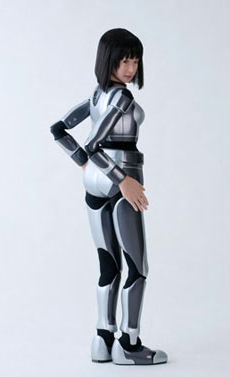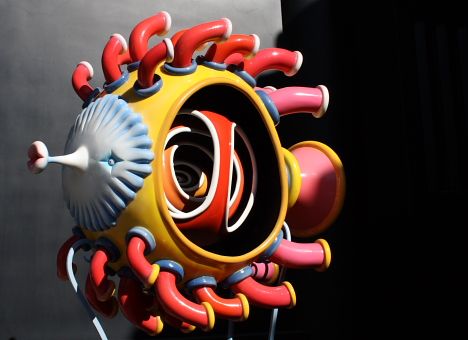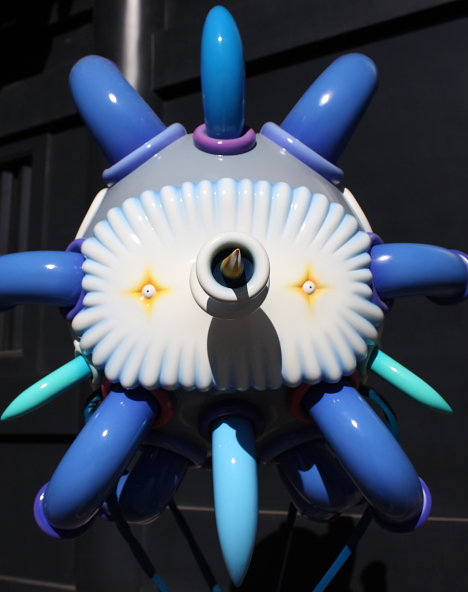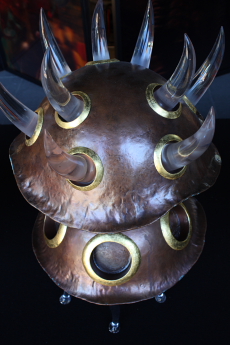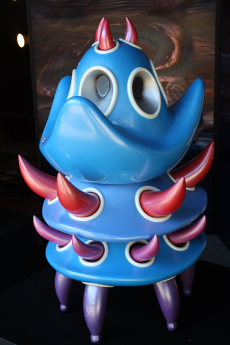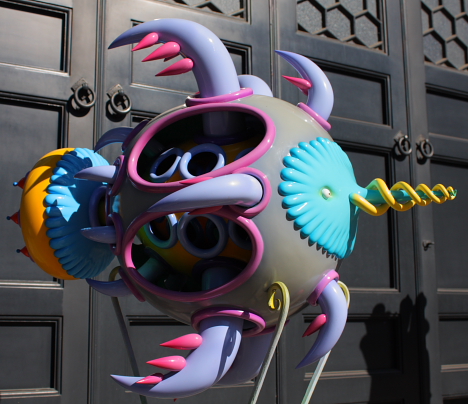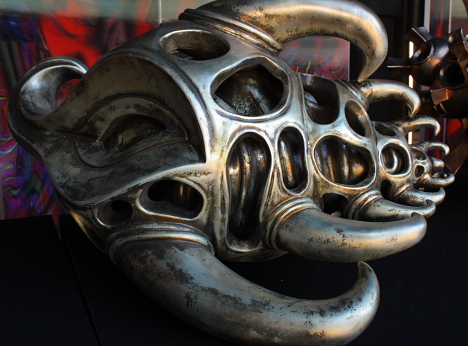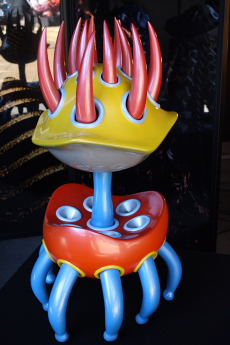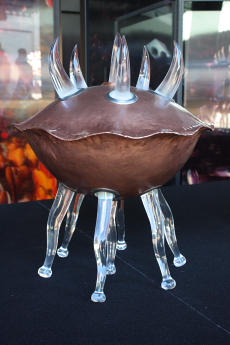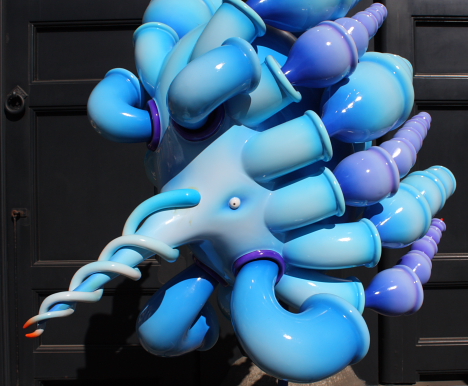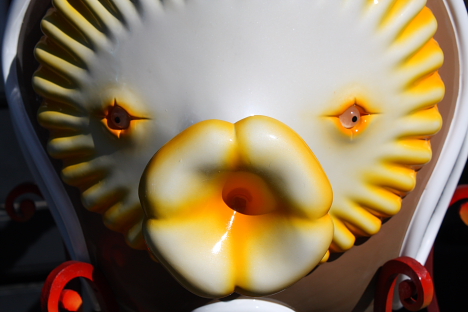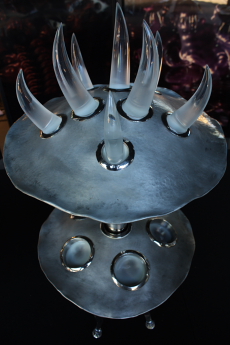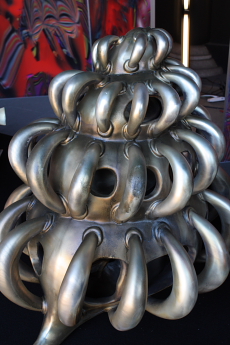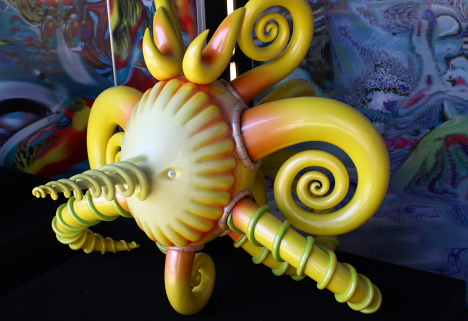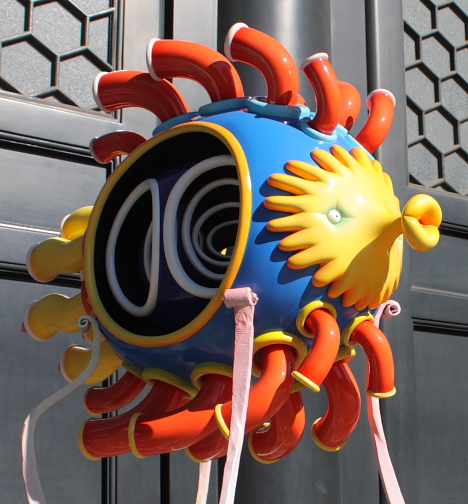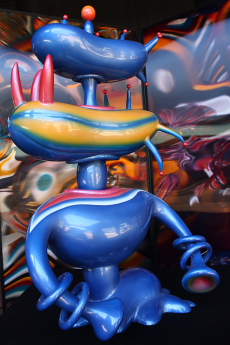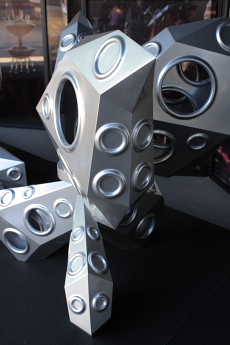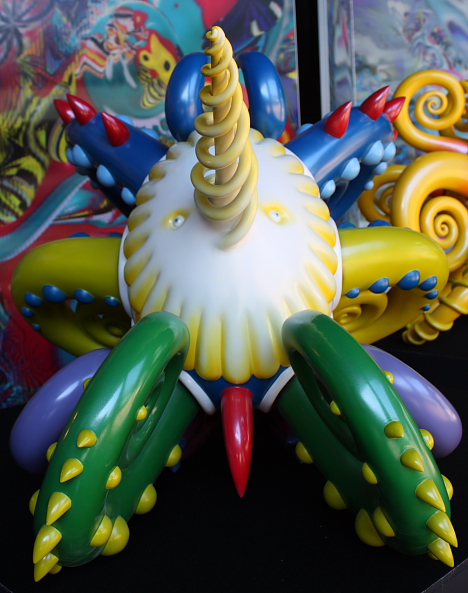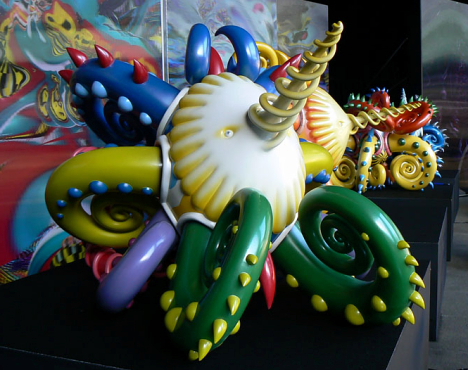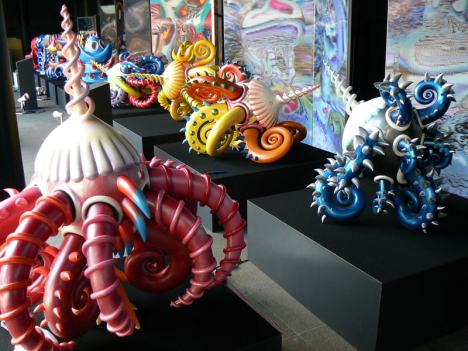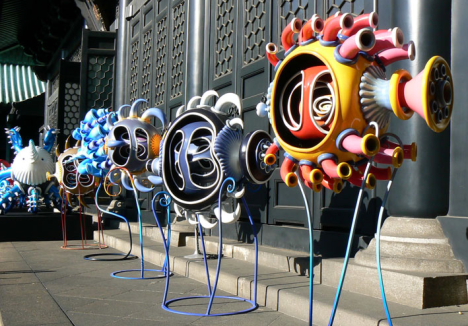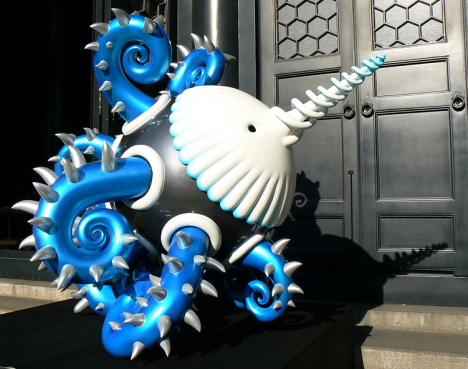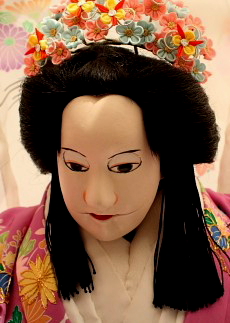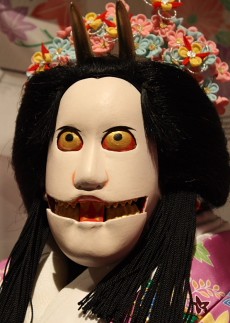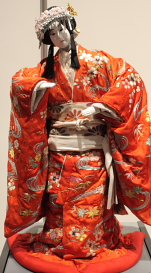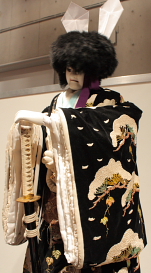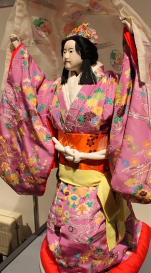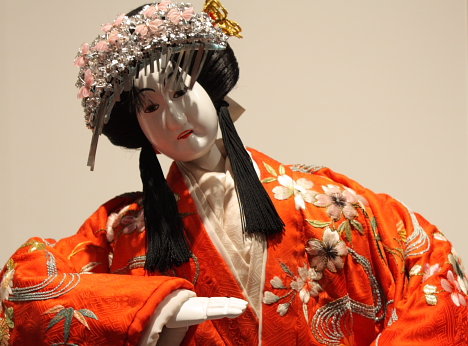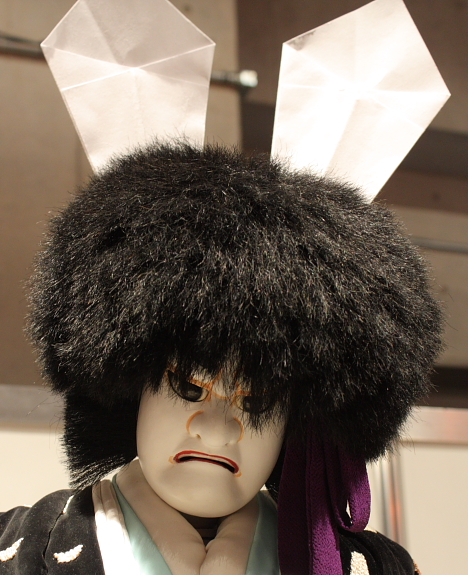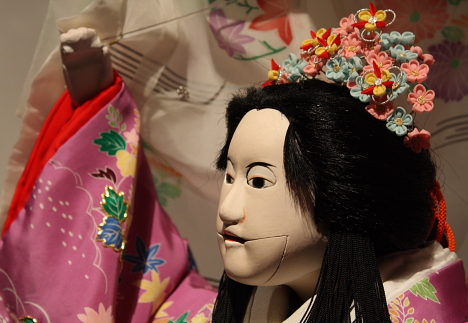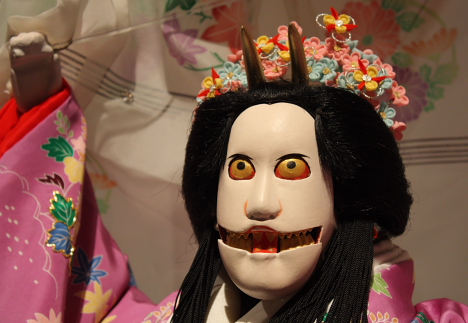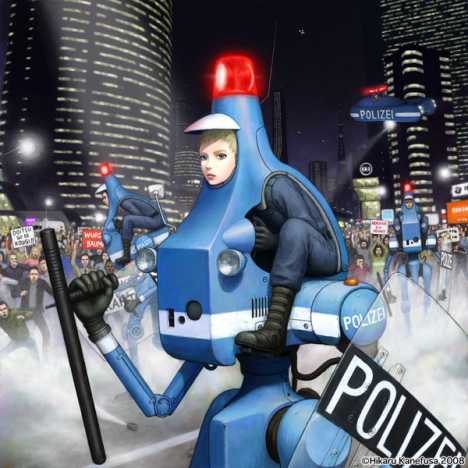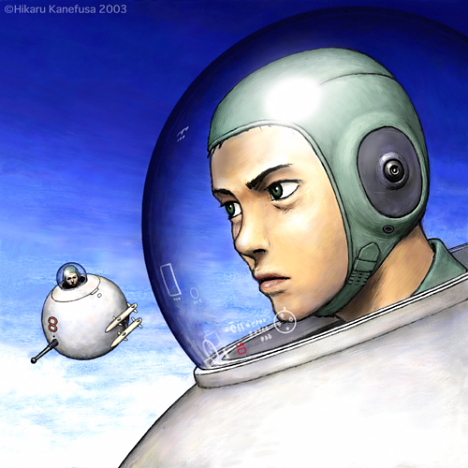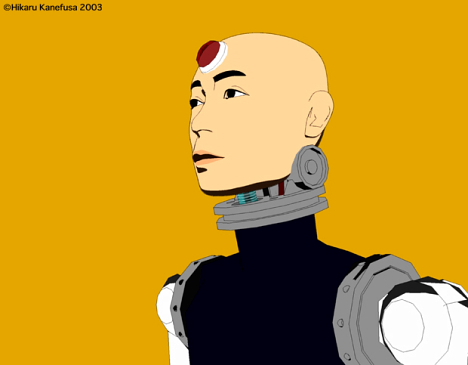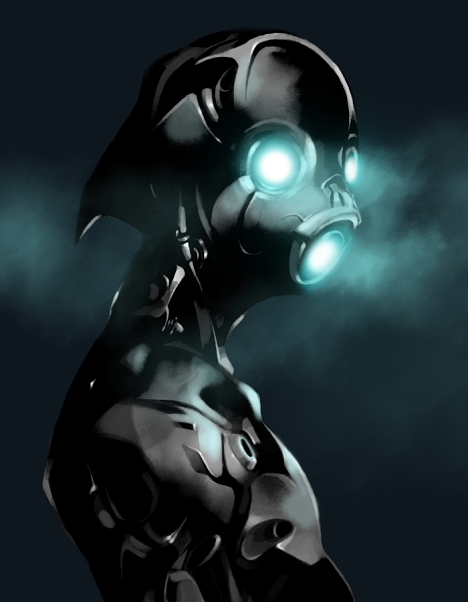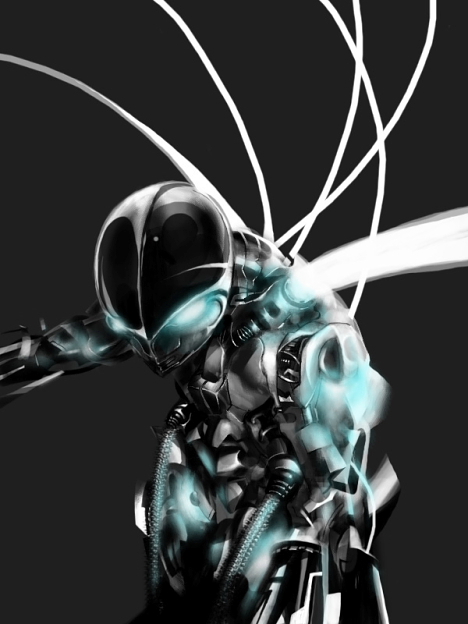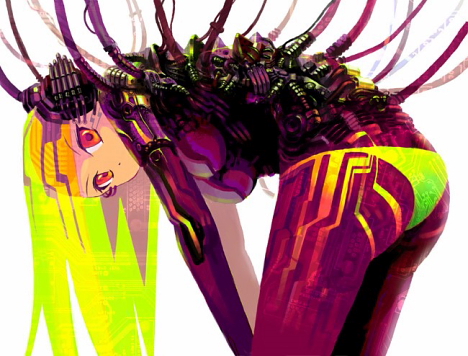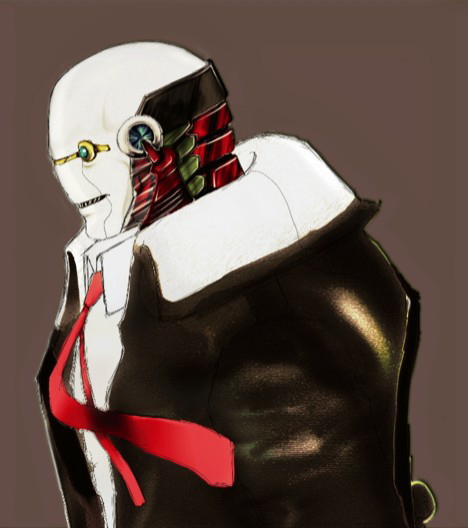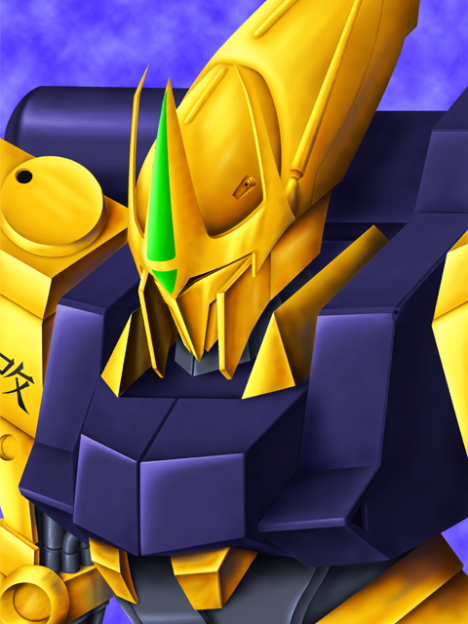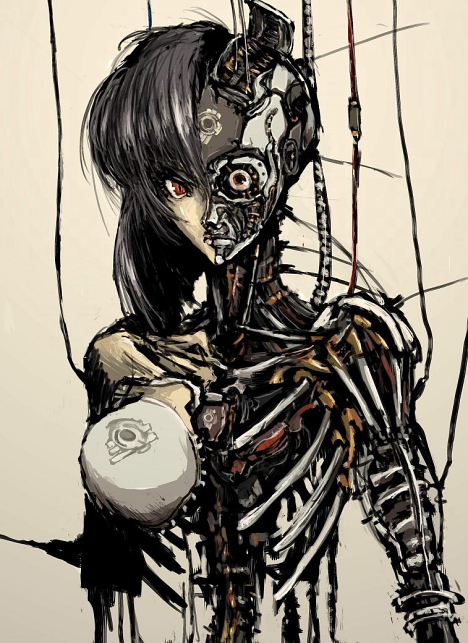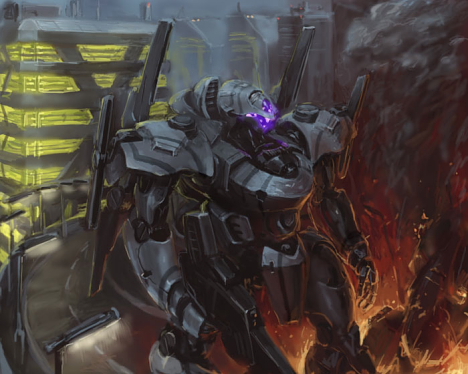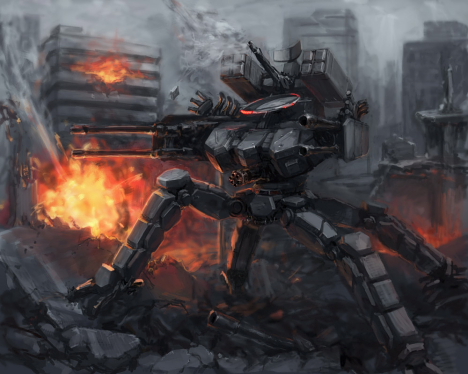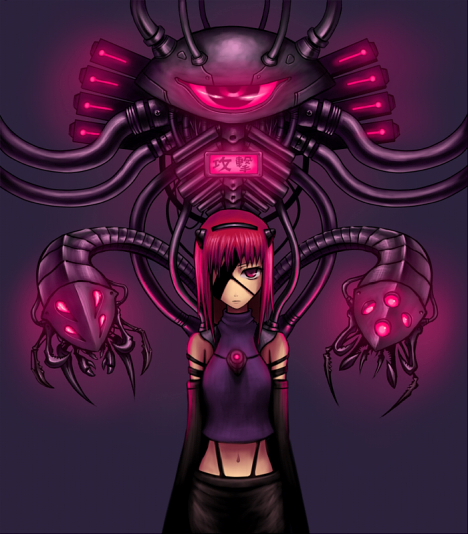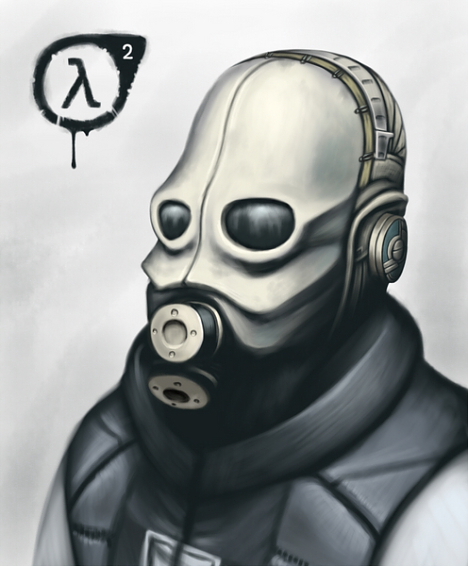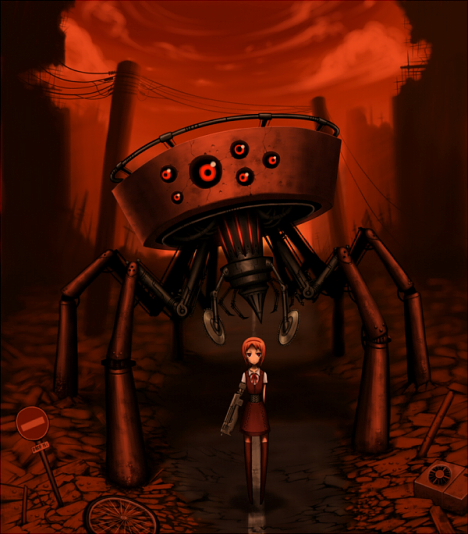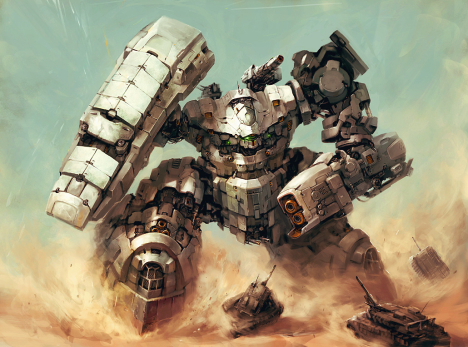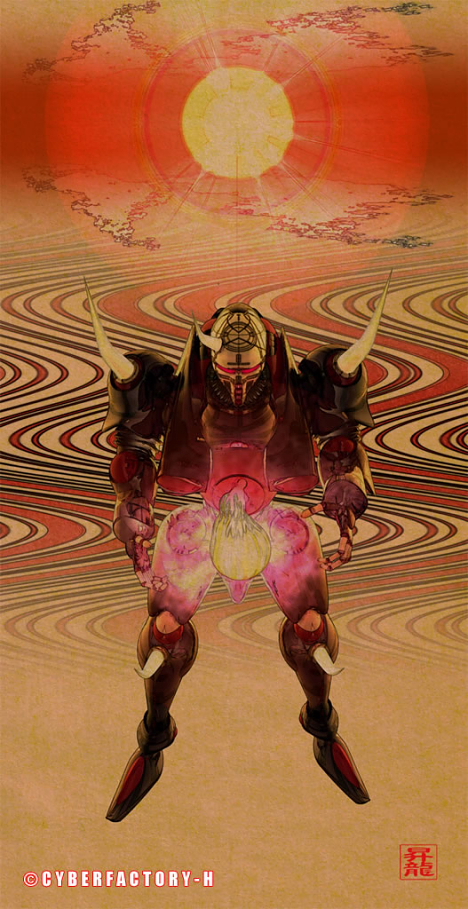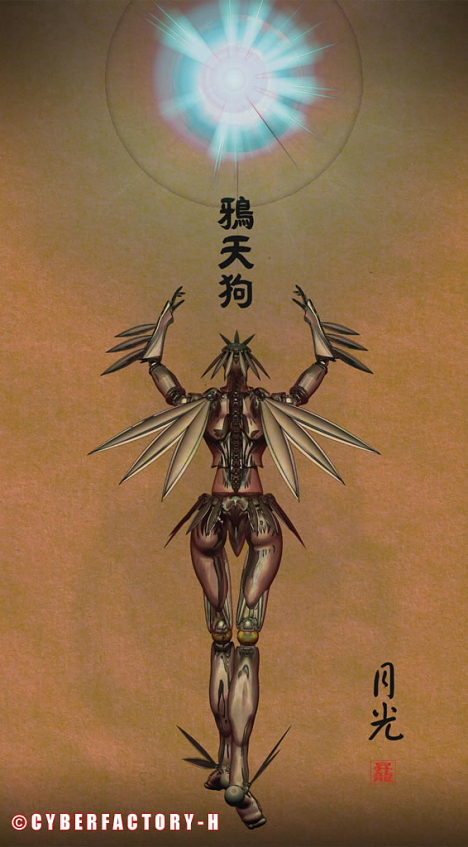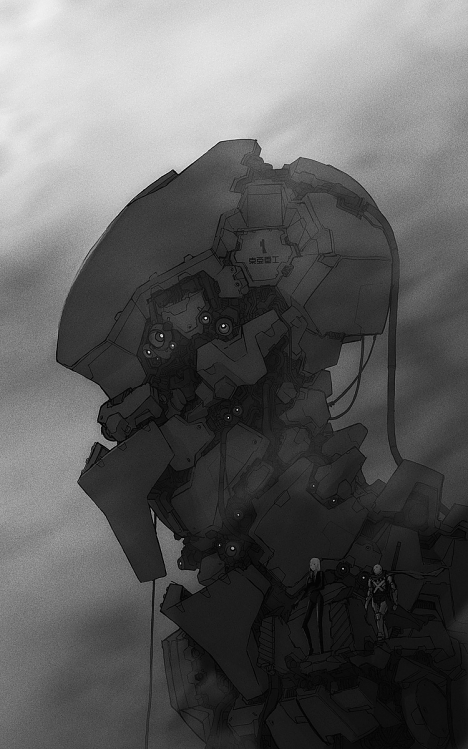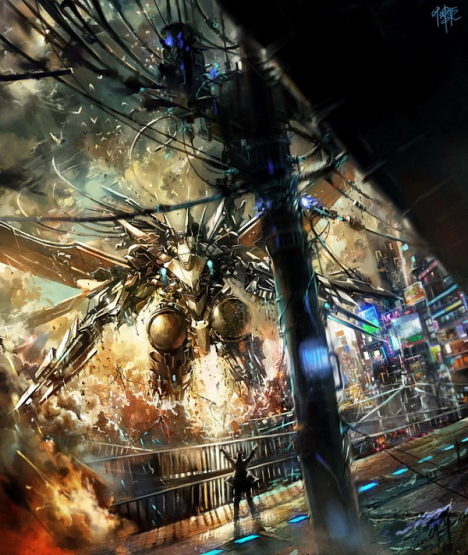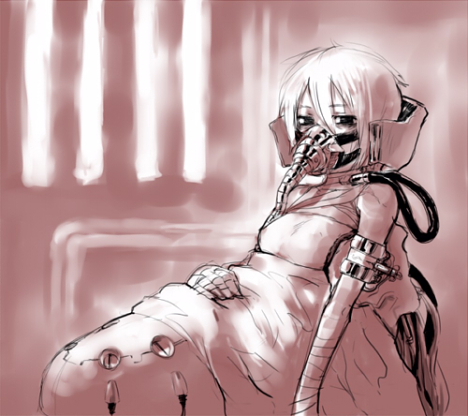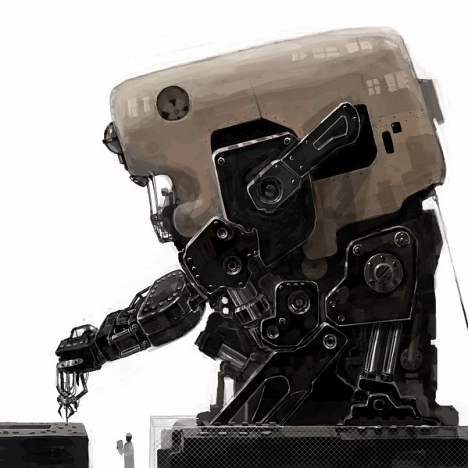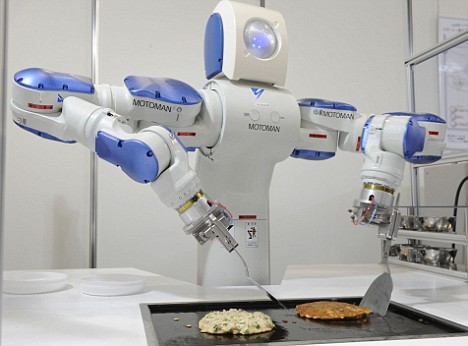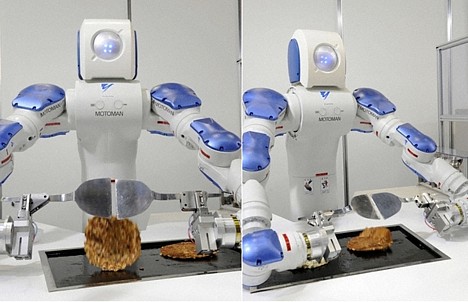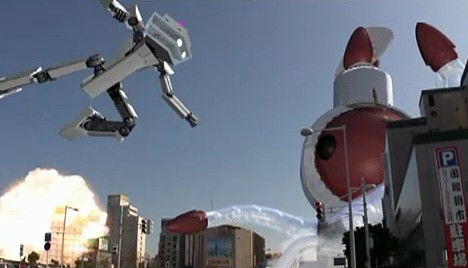
The city of Hakodate, Japan has been producing official tourism videos unlike any you've ever seen before -- action-packed affairs starring famous landmarks as giant robots that battle a runaway mechanical squid hijacked by vengeful aliens.
The first video begins with an interesting factoid: According to a survey of 100 aliens, Hakodate is the number one city they would most like to invade.
+ Video 1
The invaders here are alien cephalopods from the planet Ikaaru, who seek revenge on the people of Hakodate for eating too much squid. The aliens hijack an enlarged version of Hakodate's tourism mascot -- a mechanical squid named "Ikabo," which was built by Future University-Hakodate (FUN) in 2007 -- and send it on a rampage through the city.
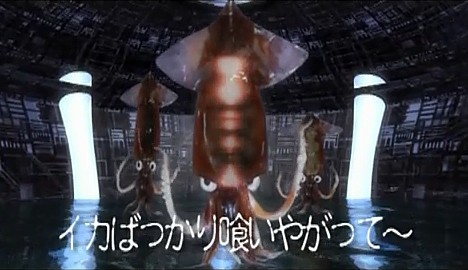
Angry alien squid from Ikaaru: "All they eat is squid!"
A pair of giant robots are called into action to protect Hakodate's precious historical buildings from destruction. Hakodate's Goryōkaku Tower transforms into a deadly fighting machine, while an enormous Chūkū Dogū (a treasured 3,200-year-old hollow clay figurine unearthed in Hokkaidō in 1975) awakens from a deep slumber.

Giant Chūkū Dogū wakes up
The city's star-shaped Goryōkaku fortress also joins the fight. After coming under attack, the fortress rises up from the flames and takes off like a giant spaceship.
+ Video 2
In the second video, the battle between the hijacked Ikabo squid robot and the Goryōkaku Tower robot rages on into winter.
+ Video 3
In the final video, the fierce battle appears to end as the Goryōkaku ship delivers a deadly blow to the Ikaaru spacecraft. But the fight has really only just begun -- another fleet of alien ships is fast approaching.
Hakodate appears to be under full-scale alien attack and its survival is in question. Visit Hakodate soon... before it's too late.



